Estimated reading time 8 minutes, 41 seconds.
Skies recently travelled from Toronto to London Heathrow and back aboard British Airways’ newest aircraft, the Airbus A350-1000. Writer Frederick Larkin reports that British Airways is clearly serious about raising the industry standard for business class service with its new Club Suite offering.
Airlines crave customers who are willing to pay for premium services. A high load factor in the expensive cabin up front will typically ensure that a flight is profitable, regardless of how many seats are filled further aft. In order to attract high yield traffic, airlines must offer an inflight experience that entices cherished road warriors and wins their loyalty for future bookings.
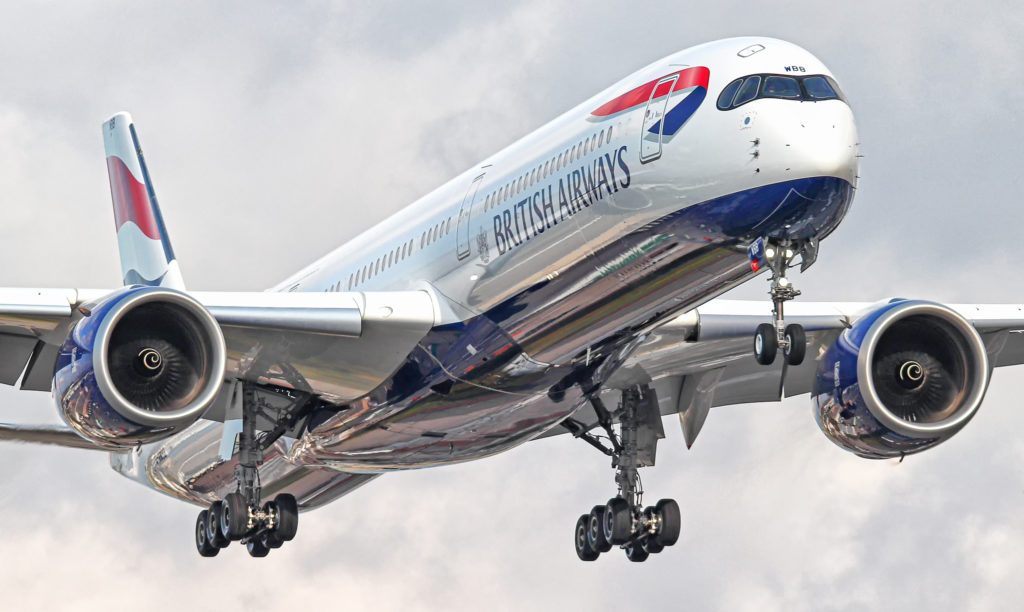
To that end, airlines will occasionally improve their premium brands by enhancing the service offered. This often involves the installation of redesigned seats, upgraded inflight entertainment (IFE) systems, WiFi, and expanding the passenger’s personal space by increasing the seat pitch. A logical time to introduce or refresh a high-end brand is when a new aircraft model is introduced. British Airways (BA) has recently done just that with the entry into service of its Airbus A350-1000s.
For many decades, the London Heathrow-Toronto city pair has been a prized route for the flag carriers of both Canada and the United Kingdom, not only for its steady stream of origin and destination (O&D) traffic, but for the feed/connecting business at either end. In the ongoing battle for lucrative market share, British Airways recently introduced its new Airbus A350-1000 on that important route. It is worth examining the airplane to find out how it might prove helpful to BA’s commercial aspirations.
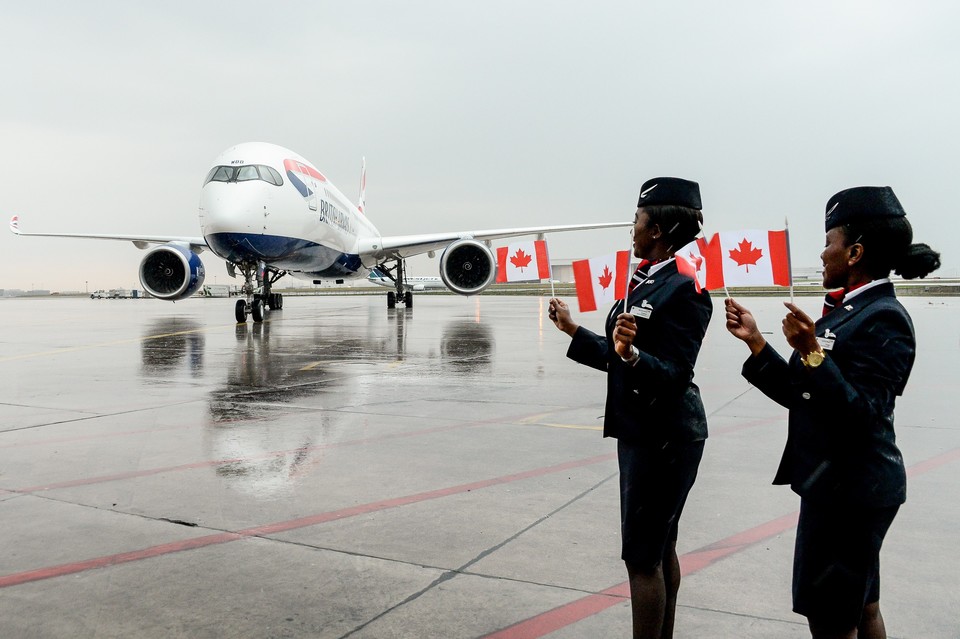
The A350-1000
While British Airways’ mainline fleet currently includes 144 narrow-body Airbus models (one A318, 42 A319s, 77 A320s and 24 A321s), as well as 12 supersized A380s, its long-haul routes are primarily serviced by Boeing models (including 46 777-200s, 12 777-300ERs, 12 787-8s, 18 787-9s and 34 747-400s).
BA’s order for 18 A350-1000s (or A35Ks as they are also known) was therefore seen as a victory for Airbus over its U.S. rival. The carrier’s examples are technically A350-1041s, as they are powered by a pair of Rolls-Royce Trent XWB-97 engines that can each produce 97,000 pounds of thrust. At cruise speed, the new twinjet burns roughly half the amount of fuel (approximately 5.5 versus 11 tonnes) per hour than the carrier’s 747-400 quadjets. Given that the seat capacity of the two aircraft is similar (331 on the A35K versus 345 on the B744), the new airplane has both attractive economic attributes and a much smaller carbon footprint.
BA has received two of the new aircraft. The first has been used on the London-Madrid and London-Dubai routes and the second entered service on the London-Toronto run on Oct. 1. Another two units are due to be delivered by year-end and future destinations are expected to include Tel Aviv, Israel and Bangalore, India.
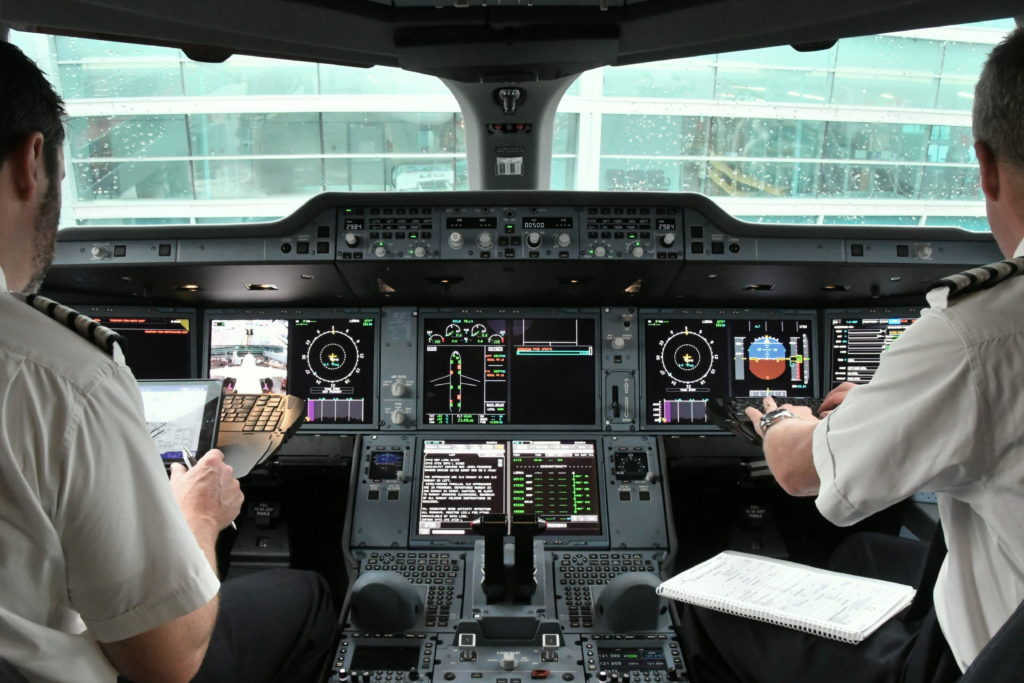
The enhanced product
British Airways’ A350-1000s are configured with a triple-class interior that features 56 seats in the Club World (business class) cabin, 56 seats in the World Traveller Plus (premium economy) cabin, and 219 seats in the World Traveller (economy) cabin. While the aft cabin’s seats have a pitch of 31 inches, the mid cabin’s seats feature a 38-inch pitch. The luxury accommodation is up front.
With the arrival of the new aircraft, British Airways has enhanced comfort and convenience for passengers by introducing attractive new features in all three cabins.
The most impressive of these changes is in the Club World cabin. Its new seats are branded as Club Suites. The forward cabin’s 56 suites are arranged four abreast (1-2-1) in 14 rows. When Skies asked Duncan Robertson (BA’s manager, Aircraft Product Development, Cabin Interiors) how long it had taken to develop the new seat, he noted that his team had worked with Collins Aerospace for two and a half years to create the chair. The process involved the design, production of a prototype, materials testing, G-force stress tests and the receipt of regulatory approvals.
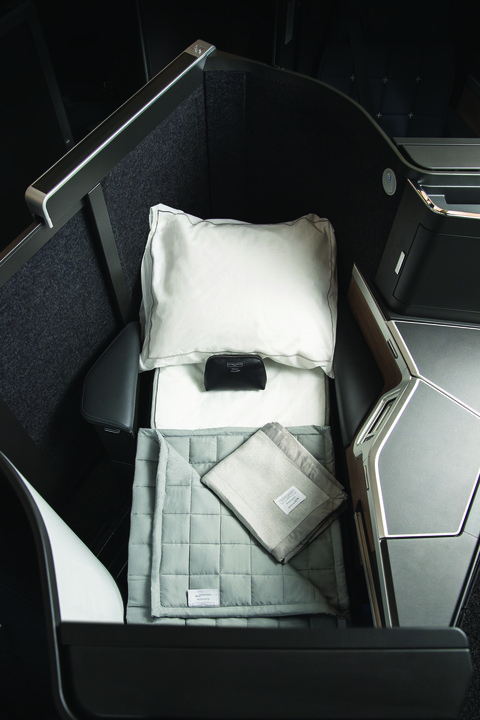
Each Club Suite features direct aisle access and is equipped with:
- a seat (angled at 30 degrees away from the aisle) that converts first into a lounge chair with foot rest, then into a 79-inch lie-flat bed;
- an 18.5-inch/47-centimetre wide Panasonic X3 monitor;
- a universal power outlet and USB ports for the use of personal electronic devices;
- a retractable reading light with two levels of intensity and two overhead lights;
- a stowable platform that acts as a desk or dining table;
- a water bottle repository;
- an adjustable arm rest;
- a fold out vanity mirror;
- two storage areas for small personal effects;
- luxurious bedding (including a pillow and a duvet) and an amenity kit from The White Company of London; and
- a pocket door that provides privacy.
The Club Suite is the first new Business Class seat introduced by British Airways in 13 years and promises to be an important arrow in the carrier’s marketing quiver.
Commercial competition requires reinforcements
In the ongoing battle for market share and profitability, airlines use new aircraft and enhanced product offerings like weapons. On the cost side, advanced airframe and powerplant technologies provide improved operating reliability and reduced operating expenses. On the revenue side, enhanced service offerings attract and retain the most treasured traveller – the premium class frequent flyer.
At approximately $500 million (US$375 million) apiece, the A350-1000 is a formidable piece of airline artillery. British Airways is clearly serious about raising the industry standard for business class service with its new Club Suite.

Key A350-1000 numbers
- Length: 242′ 1″ / 73.78 m
- Wingspan: 212′ 5″ / 64.75 m
- Height: 56′ / 17.08 m
- MTOW: 316 tonnes / 696,600 lbs.
- Passengers: 330 – 440
- Max. Range: 8,700 NM / 16,100 KM





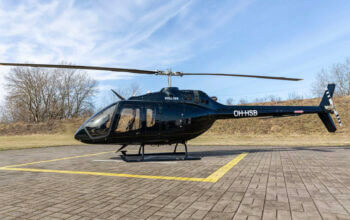
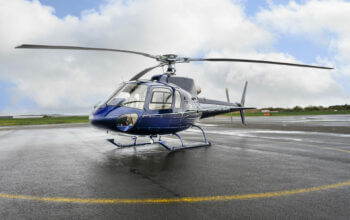
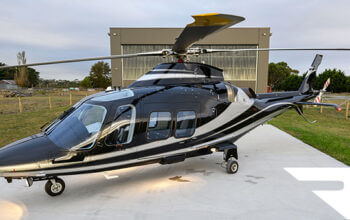

Typo, each engine has 97,000 not 79,000lbs of thrust.
Well spotted Jeff. Thanks.
The last flight I had toronto to London was on a filthy Dreamliner in December 2020 it was supposed to be cleaned properly because of COVID there was a empty bitter and head phones from the last flight
And some pieces of paper in my space, I was flying business class,so not impressed with your flag waving article